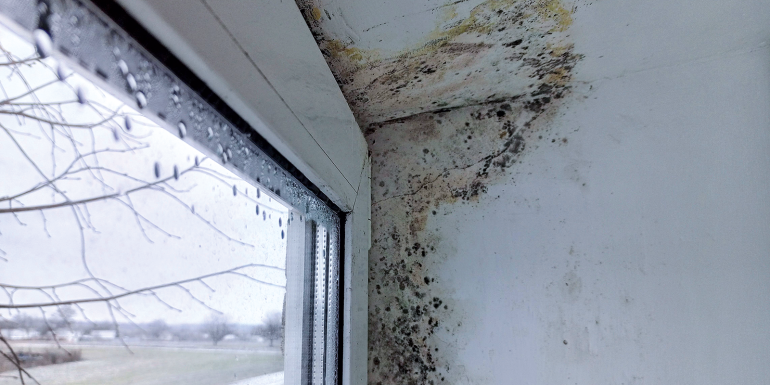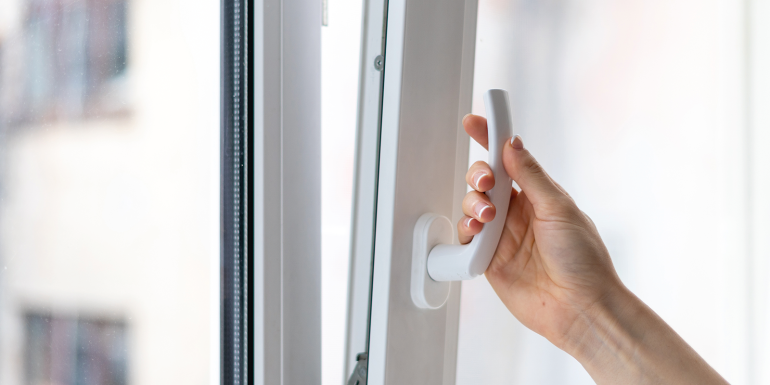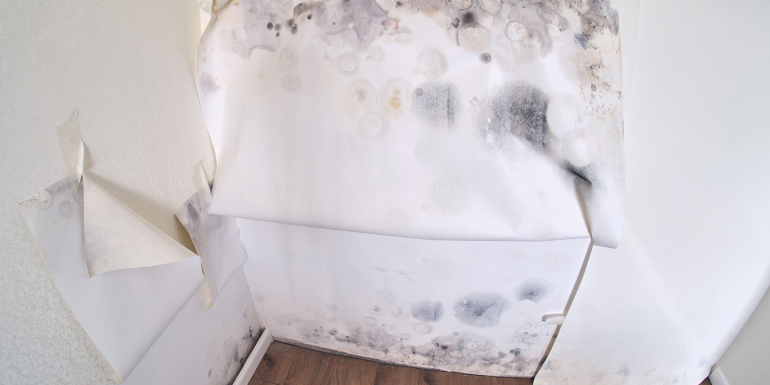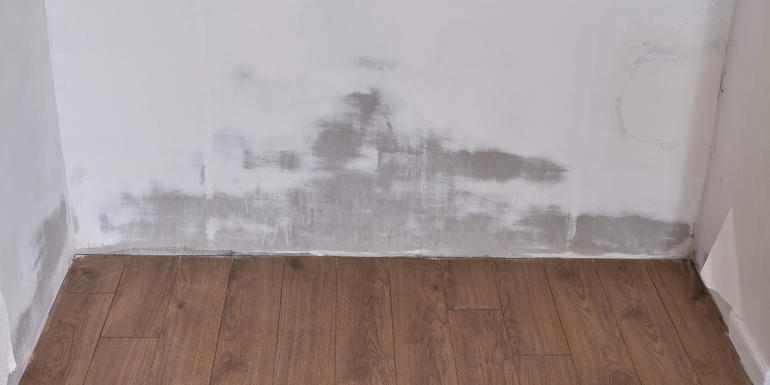Mould and damp in properties

The death of two-year-old Awaab Ishak due to chronic exposure to mould at his housing association home left landlords and building managers reeling. Huw Morris looks at the implications
Awaab Ishak died of a severe respiratory condition eight days after his second birthday in 2020. The verdict – delivered at the inquest into his death by Joanne Kearsley, Senior Coroner for North Manchester, last November – sent shock waves across the UK’s social housing sector.
The toddler had died because of black mould in the bathroom and kitchen. His parents had repeatedly complained to their landlord, Rochdale Boroughwide Housing. “Action to treat and prevent the mould was not taken,” Kearsley said. “His respiratory condition led to respiratory arrest.”
The coroner added that the cause of any damp or moisture was “more likely than not due to normal daily living activities”, with “no evidence that the ways of living by the family were in any way excessive”. The boy’s death, she continued, “will and should be a defining moment for the housing sector in terms of increasing knowledge, increasing awareness and a deepening of understanding surrounding the issue of damp and mould”.
Levelling Up, Housing and Communities Secretary Michael Gove called the death “an unacceptable tragedy” and launched an urgent review of guidance to landlords about health risks from damp and mould. He also wrote to all local authority chief executives, council leaders and providers of social housing with statutory directions to tackle mould and damp. As one observer comments, Gove’s move “created terror in the eyes of housing association and council managers”.
His intervention was quickly followed by the Regulator of Social Housing (RSH) demanding social housing landlords submit evidence about the extent of damp and mould in their tenants’ homes and how they are tackling it. Its initial findings, published in February, revealed 0.2% of social homes in England – equating to around 8,000 – have the most serious damp and mould and would fail the Decent Homes Standard. Between 1%-2% of social homes – equating to between 40,000 and 80,000 – are estimated to have serious damp and mould, while a further 3%-4% – equating to between 120,000 and 160,000 – have a notable problem.
The RSH noted that while the vast majority of tenants are “largely free from damp and mould”, those living with them face serious risks to their health and wellbeing. Landlords must “identify and address these issues promptly and effectively”, with the RSH pledging to clamp down where appropriate.
Team effort
For Property Care Association (PCA) CEO Steve Hodgson, the coroner’s findings, Gove’s intervention and subsequent pressure from the RSH are “game-changers” for landlords. His members are reporting a huge rise in problems cited by landlords, while the PCA has received a “100% uplift” in enquiries for training.
“They have had to think and act very quickly. Who would want to be in the same position as Rochdale Boroughwide Housing, especially when the court of public opinion is very much against them?” he says. “They have been asked to take action on a very tight timescale.”
A range of factors are behind the rise in mould and damp, chief among them rising fuel costs, higher levels of occupation and the drive to make homes more energy efficient. Professor Andrew Geens, who recently retired as head of CIBSE Certification, says the Rochdale case has raised awareness at the same time as the recent fuel price rises – which, as he explains, “will see more properties experiencing condensation-related problems”.
The issue will only get worse. According to the Child Poverty Action Group, more than half of households in the UK (15 million) either are or will be in fuel poverty in the first months of 2023. This is measured as households spending more than 10% of their income on fuel. That issue is not confined to social housing. In 2020, 2.2 million homes in England had at least one hazard in the highest risk category for public health and 941,000 had serious damp, according to the English Housing Survey.

What should landlords do?
The Chartered Institute of Housing acknowledges it has been contacted by “numerous landlords” following the Rochdale inquest. It suggests five key actions as a template for tackling reports of damp and mould in the future:
- urgently review records to identify reports of damp and mould and see what action has been taken
- seek urgent access to all homes with reports of damp and mould that have not been inspected to find out whether there is a serious hazard present and the work required. If a tenant does not allow access, then landlords may need to seek an injunction as the only way they can ensure compliance
- prepare a schedule of work and take steps to remedy the problem without delay. This should be given to the tenant with a timescale
- use the Housing Ombudsman report Spotlight on: Damp and mould as a checklist for good practice; and
- landlords should consider whether their policies and procedures are fit for purpose, review their contractors’ performance and consider whether staff need to refresh their training.
What the law says
Social landlords had been warned for some time. The Housing Ombudsman Service’s 2021 report on damp and mould called on them not to blame tenants. Yet formal complaints about damp, mould and leaks are expected to reach 5,300 for the year to March, up from below 2,000 in 2020-21. Ombudsman Richard Blakeway says less than half of landlords are estimated to have introduced policies to tackle the problem, and some are still blaming tenants’ laundry, cooking and other “lifestyle” issues for mould. Some, he says, have removed words such as “lifestyle” from their policies and replaced them with euphemisms such as “internal environmental factors”.
Hodgson says the housing ombudsman “has been very forthright that we should not blame tenants for mould and damp”, while the Homes (Fitness for Human Habitation) Act 2018 “has put more power in tenants’ hands”. He notes: “The pressure has been building for a while, but the dam has now broken.”
The Rochdale inquest highlighted the importance of landlords complying with obligations under Section 11 of the Landlord and Tenant Act 1985, as well as Section 9A of the same law as inserted by the Homes (Fitness for Human Habitation) Act 2018. The landlord’s breach of Section 9A, which the coroner said led to Awaab’s death and which came into force for existing tenancies in March 2020, ensures a home “is fit for human habitation at the time the lease is granted … and will remain fit for human habitation during the term of the lease”.
On mould, a landlord will “usually” be responsible if it is caused by a structural defect such as rising damp. A tenant will “usually” be responsible if the mould has been caused by failing to ventilate or heat the property. Expert evidence may be needed to confirm the most likely cause and how to solve the problem.

Before and after treatment

Approved Document F
Approved Document F, which covers ventilation in homes, applies to all new build and modified properties. This states that ventilation is the removal of “stale” air from a building and replacement with fresh outside air.
The document also states that ventilation is required for one or more of the following:
- provision of outside air for breathing
- dilution and removal of airborne pollutants including odours
- control of excess humidity from water vapour in indoor air; and
- provision of air for fuel-burning appliances as covered under Part J of the Building Regulations.
However, Approved Document F is not enforced to the same extent as other Building Regulations, says the Property Care Association (PCA). Its poll during a recent webinar on ventilation found nearly three-quarters of delegates believed less than a third of installs in new builds complied with Building Regulations.
In short, the PCA argues if the picture is much worse in existing buildings and the industry is struggling to get it right in new builds, then questions must be asked.
The Rochdale case is prompting calls for the Health and Safety Executive’s (HSE) role to be extended, and the watchdog has recently consulted on a proposed competency framework for building control inspectors. “If it’s in an industrial workplace and you are made ill by that workplace, then the HSE will get involved,” says PCA CEO Steve Hodgson. “Why should it be different if a tenant is made ill by their home and it’s a landlord or company that provides that home as part of their business?
“Why on earth should a regulator not be involved?”
Expert view
Professor Geens has run courses on tackling mould and damp for the Chartered Institute of Housing and the Building Services Research and Information Association, and is also an external examiner for the PCA. He advises that building engineers should keep the BSI’s Code of practice for control of condensation in buildings to hand as their standard document, a new version of which was published in 2021. The issue is down to “a complicated equation of contributory factors”, and often condensation is part of the problem.
“There is only a certain amount of moisture air can carry at any given temperature. It’s better not to get moisture in the air in the first place, but that’s unavoidable as we breathe out vapour and a lot of household activities produce it. To avoid condensation, you either have to keep the temperature high enough for the air to carry the moisture or ventilate the space to get rid of the moisture and replace it with fresher air. But if you ventilate more, that drops the temperature. It’s a fine balance getting that right.”
While many landlords include advice on managing condensation in their information packs for tenants moving into a home, this is not universal. He notes that if you don’t know you are making the situation worse, then there’s no expectation on you not to do it.
Professor Geens has run numerous professional training courses, but “the successful management of a property is a team effort between the landlord and the tenant”. That is a complicated mix, but knowledge and awareness are top of the list for both sides.
“There will be cases where a landlord has ignored what they should be doing, the property is in poor condition and it’s very much on the landlord’s side that something needs to be done.
“Equally, you can have a very well-designed and maintained property and the tenant is not keeping their part of the bargain.
“It’s not unusual for three flats in the same building to not have a problem while a fourth one does. In that situation, it’s likely but not definite that the tenant is doing something different to the other three that don’t have a problem. But you can get a building where many of the flats have a problem, which suggests that’s down to the landlord,” he says.
There are things tenants can do to mitigate the risk, such as wiping things down, drying surfaces after a shower, opening windows while cooking and not drying clothes inside.
But the landlord can make sure the building is well insulated and has an efficient heating system so that it’s affordable. He also notes that, when decorating, they should use finishes in wet areas that are not absorbent and therefore easy to keep dry and free of mould.
“The ideal situation is where the landlord is providing a suitable property that can be heated affordably and the finishes lend to keeping everything clean and dry. But if it becomes a lot more expensive to maintain the heating, that knocks the equation out of balance.
“You then have a condensation risk, and there are plenty of headlines about people not being able to afford to heat their homes because of rising fuel prices.
“Even if all landlords were doing a good job, something like people’s ability to meet the background temperature in a property that avoids condensation risk has been knocked sideways.”
Social housing landlords will have to investigate and fix damp and mould in their properties within strict new time limits under amendments tabled by the government to the Social Housing Regulation Bill to introduce ‘Awaab’s Law’. A consultation will be launched later this year to set the timeframes within which landlords must act to investigate hazards and make repairs. The new rules will form part of the tenancy agreement, sotenants can hold landlords to account by law if they fail to provide a decent home.
Professor Geens points out that it is in no one’s interests to allow a building to decay and succumb to mould. “While there will be cases where landlords have not done their best to keep their properties free from mould, normally this is a win-win situation where taking the correct actions not only protects their tenants but also their assets. Damp conditions even without mould are detrimental to the structure and the internal decoration of the property.”










